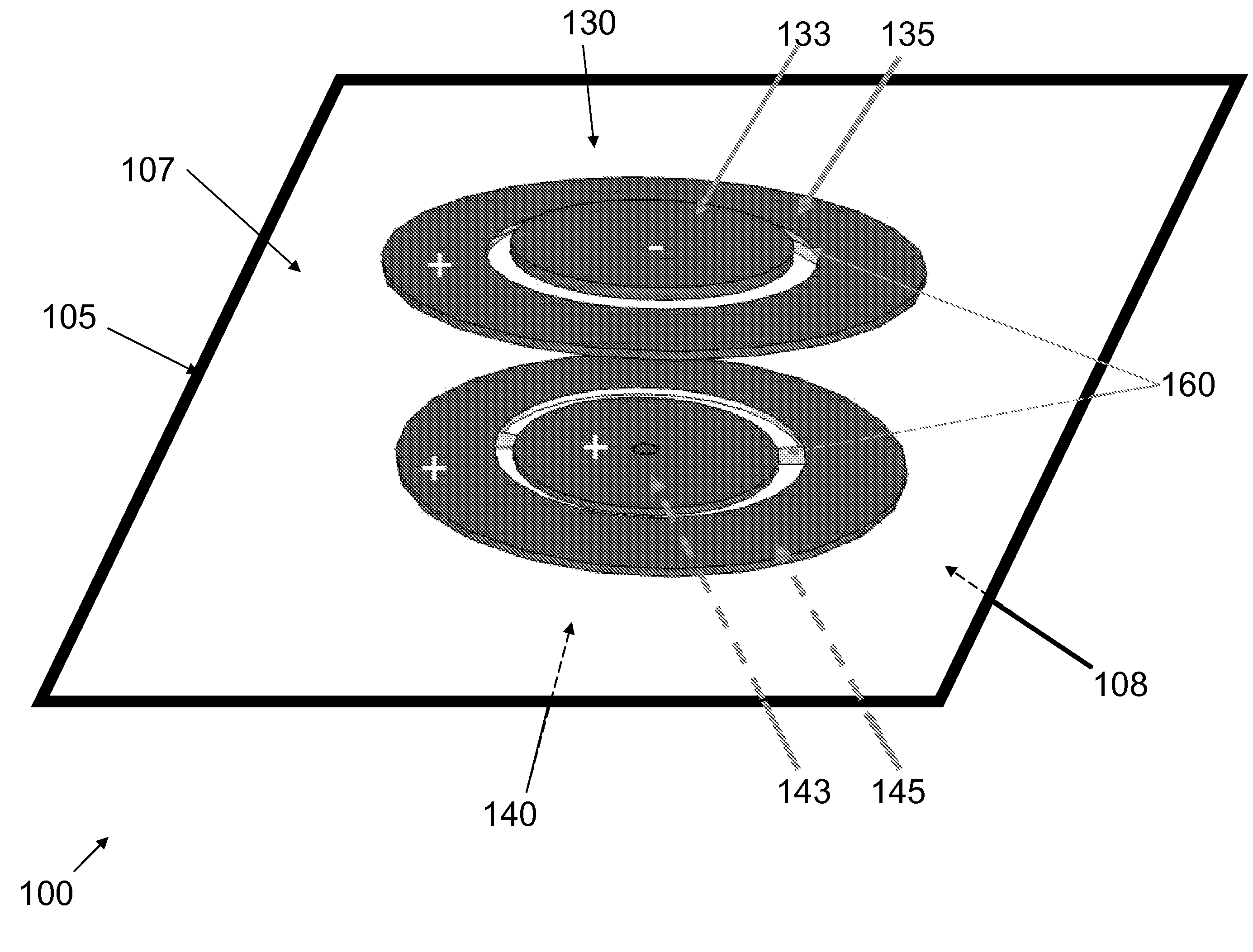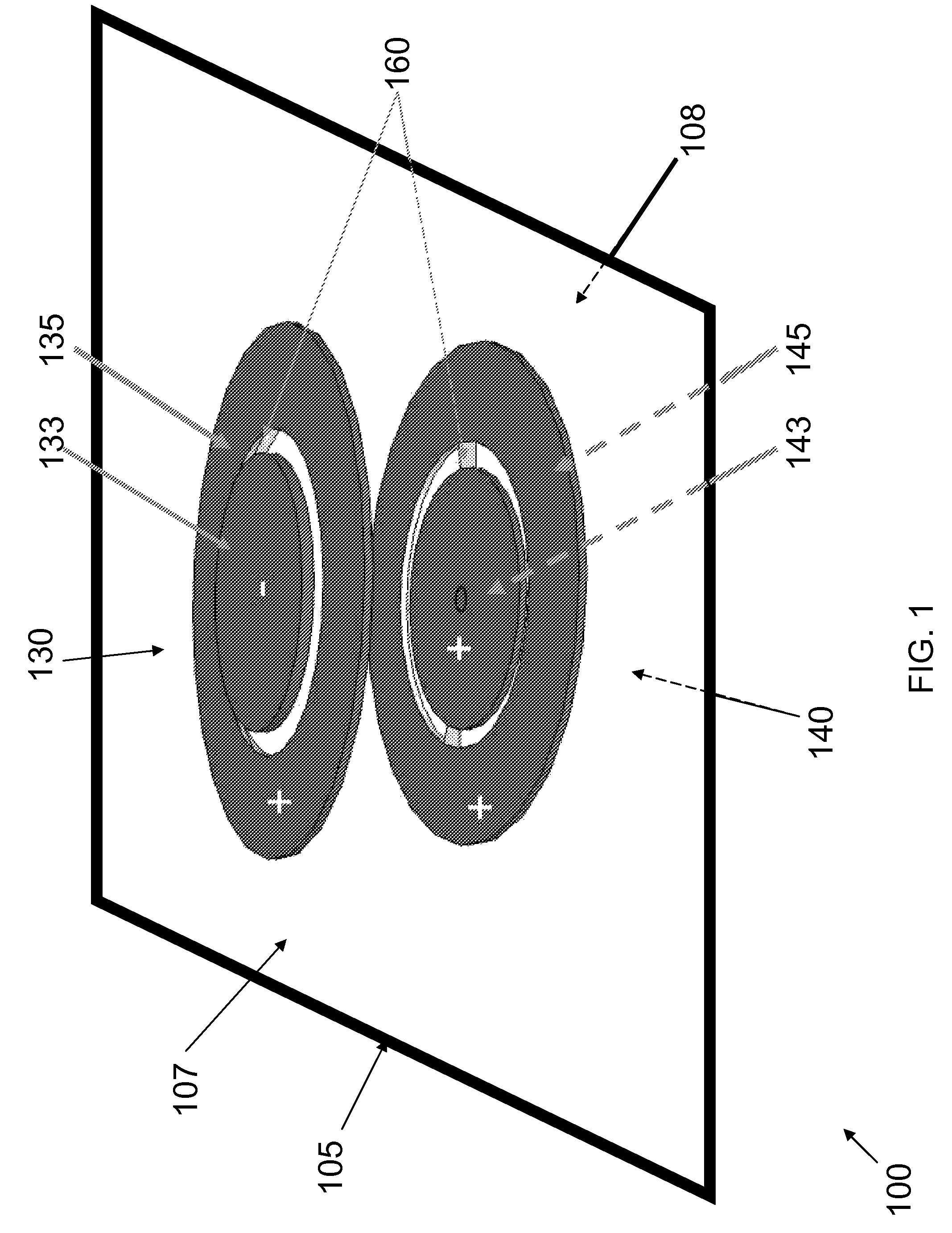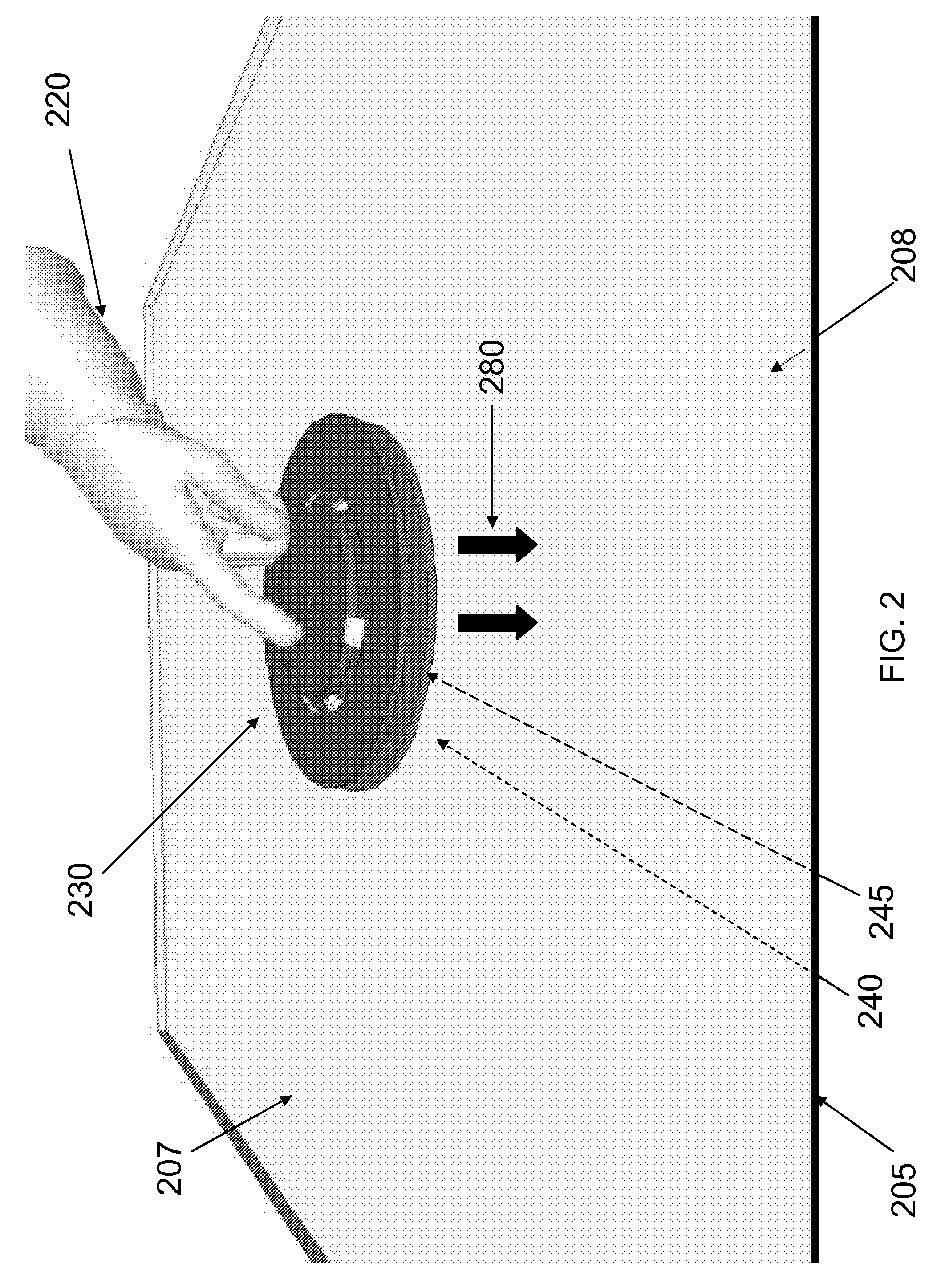Method for protecting a touch-screen display
- Summary
- Abstract
- Description
- Claims
- Application Information
AI Technical Summary
Benefits of technology
Problems solved by technology
Method used
Image
Examples
first embodiment
[0053]Attention is turned to FIG. 1 which shows a schematic view of an embodiment of a touch-sensitive screen protector 100. A rigid, generally flat optically clear element 105 has an outer surface 107 and an inner surface 108. The inner surface 108 is generally the side of the element 105 which is closest to a touch-sensitive or similar display (not shown) and furthest from a user (not shown) of a device that includes the aforementioned display. In this embodiment, a first magnet pair 130 is disposed on the outer side 107 of the element 105, while a second magnet pair 140 is disposed on the inner side 108 of the element 105. Each magnet pair 130&140 includes at least two magnets: the outer magnet pair 130 includes magnets 133&135, while the inner magnet pair 140 includes magnets 143&145. The magnets in the drawings are circular magnets, the circle shape being just an option and the magnets may be of any relevant shape, size or composition. In a typical embodiment, magnets 133, 135&...
second embodiment '
Second Embodiment'
[0057]Attention is now turned to FIG. 5 which shows a schematic view of an embodiment of the instant invention. A touch-sensitive display 515 associated with a cellular phone, tablet computer, watch, handheld electronic device or the like is covered with an element 505 which is impact resistant. Holding features 518 may be used to fasten the element to the display 515 so as to leave space 580 between element 505 and display 515. Such features 518 include but are not limited to clips and contact elements. Contact elements may be any features that aid in attaching the element 505 proximate the surface of the display 515. The impact resistant element 505 has an upper magnet pair 530 and a lower magnet pair 540. The upper magnet pair 530 is shown slightly displaced above the element, though—as described in the previous embodiment—only one of the two magnets of the magnet pair 530 is generally displaced from the element 505 surface. A stylus 538 capable of activating th...
third embodiment
[0060]Attention is now turned to FIG. 7 which describes a method for protecting a touch-screen display from physical damage, including: providing an optically clear solid element whose dimensions are similar to those of the display and whose thickness is selected to prevent damage to the display; disposing magnet pairs on either side of the solid element, wherein the magnet pairs are disposed opposite one another and wherein physical contact with one magnet of a first magnet pair causes magnetic repulsion of a first magnet opposite it in the second magnet pair on the other side of the solid element; associating a stylus to the first magnet of the second magnet pair, wherein the stylus is disposed away from the solid element; and, securing the solid element with the magnets and stylus onto the display, wherein the stylus is in non-contact proximity to the display. The method herewith described allows a user to interact with a touch-sensitive display through the medium of a optically-...
PUM
| Property | Measurement | Unit |
|---|---|---|
| Thickness | aaaaa | aaaaa |
| Friction | aaaaa | aaaaa |
Abstract
Description
Claims
Application Information
 Login to View More
Login to View More - R&D
- Intellectual Property
- Life Sciences
- Materials
- Tech Scout
- Unparalleled Data Quality
- Higher Quality Content
- 60% Fewer Hallucinations
Browse by: Latest US Patents, China's latest patents, Technical Efficacy Thesaurus, Application Domain, Technology Topic, Popular Technical Reports.
© 2025 PatSnap. All rights reserved.Legal|Privacy policy|Modern Slavery Act Transparency Statement|Sitemap|About US| Contact US: help@patsnap.com



